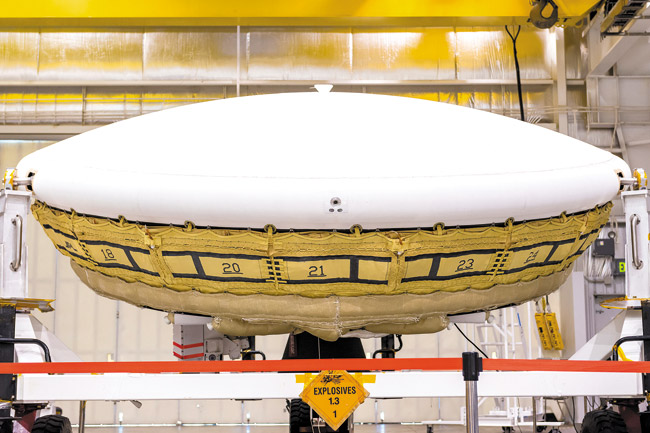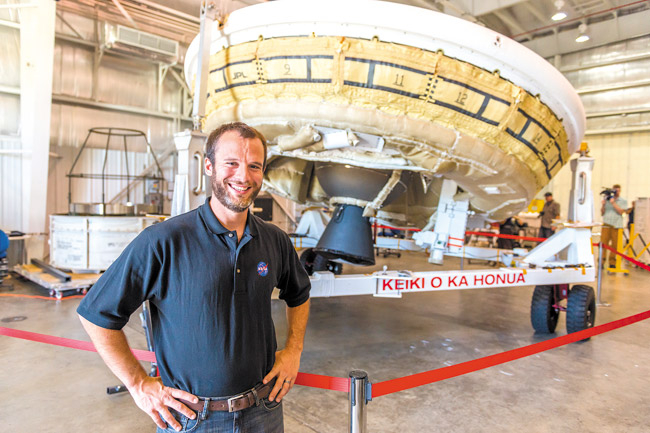Up, Up, and Away
Story and photos by Daniel Lane
Science fiction comes alive on Kauai as NASA gets ready to send a huge parachute into space, preparing for a manned landing on Mars
For the first time in more than 40 years, National Aeronautics and Space Administration (NASA) is developing and testing different ways to slow a spacecraft’s rate of descent as it enters a planetary atmosphere — last week’s planned launch from Kauai’s Pacific Missile Range Facility (PMRF) in Kekaha was delayed by weather, perhaps until this week.
mw-feature-061114-nasa-2
Until now, probes sent to the surface of Mars have used the same technology as the Viking landers, developed back in the early 1970s. This involved large parachutes used singly or in groups. This technique has worked well, but has limitations, the most important of which is payload.
Currently, only a total weight of approximately 1.5 tons has been able to land safely on the surface of Mars. But with the goal of sending humans to the Martian surface, a safe and effective way to put between 20 and 40 tons of material onto the ground is needed. NASA is here to test the initial designs that will take us one step closer to that goal.
The test vehicle of today is the Low Density Supersonic Decelerator (LDSD). The low density comes from the thickness of the Martian atmosphere, which is equivalent to only 1 percent of the density here on Earth at sea level. The challenge is to slow down a large mass that is traveling at more than three or four times the speed of sound in a very thin layer of air.
Its distinct saucer shape, so popular with science fiction movies of the 1950s, serves a significant purpose on this particular test flight. The design aids in slowing down the vehicle, while it also helps direct airflow into the initial device, the Supersonic Inflatable Aerodynamic Decelerator (SIAD), which wraps around the edge of the vehicle. As the saucer descends into the atmosphere, the SIAD will deploy, creating a large, durable, doughnut-shaped “balloon” around the vehicle. The drag created will slow the rate of descent from Mach 3.5 or greater down to Mach 2 or lower.
After the initial slowdown, a secondary tool is being tested. A 100-foot-diameter parachute called the Supersonic Disk Sail (SSDS) will deploy and further slow the entry vehicle from Mach 2 to 1.5 down to subsonic speeds. These devices will be the largest of their kind ever flown at speeds several times greater than the speed of sound.
This first test flight on Kauai is to start with a very large balloon. Once inflated, the balloon will carry the LDSD up to 120,000 feet.
Once that altitude is reached, the balloon will release, and a solid rocket on the bottom of the vehicle will fire and further carry it up to more than 180,000 feet while accelerating it up to over Mach 4. This altitude is necessary to simulate the low density of the Martian atmosphere. After the right speed and altitude are achieved, the craft will start its rapid descent toward the planet, and the actual testing begins.
This test vehicle is the first in a series that NASA will test here on Kauai. A second test already is scheduled next year, using an even larger vehicle than the current model of the LDSD. Kauai’s own PMRF is considered the perfect location to do this. The technology and infrastructure are already there, and most of all, it has the space available.
Join me in wishing the best of luck to the military personnel of PMRF alongside NASA scientists in this and all future endeavors, helping to broaden mankind’s knowledge and our reach for the stars.







